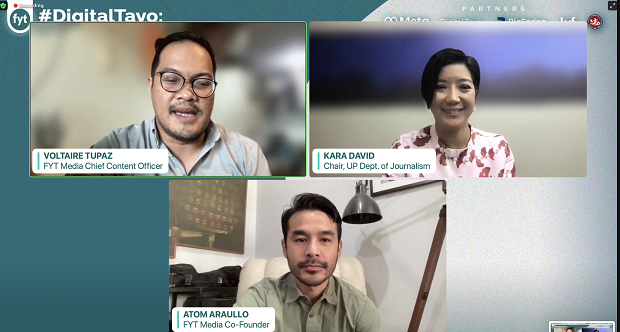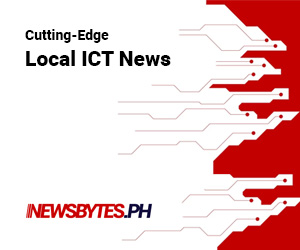The “#DigitalTayo: Building a Safe Space for Free Speech” forum held last Dec. 17 brought together established journalists to discuss the challenges and risks they face in today’s social media news ecosystem, especially those posed by disinformation.

The journalists also touched on how social media can become a safe space. From honing the ordinary Filipino’s storytelling skills to starting constructive conversations, they identified a few ways digital dangers could be tackled.
GMA Network reporter Atom Araullo kicked off the forum by describing the country’s uncertain and perilous news environment.
Rising disinterest in news and news avoidance among all Filipino age groups are only the tip of the iceberg, he said. Araullo recounted how colleagues’s reputations have been maligned through fake news and how they have been red-tagged, charged with cyber libel or trumped-up charges, and had bounties placed on their heads. At worst, they were even killed.
Other journalists who cover Mindanaoan stories stressed the dangers that have been exacerbated by the spread of disinformation, such as heightened polarization and the public’s misunderstanding of their roles.
Davao Today journalist Lucelle Bonzo shared how her own media outfit had been wrongly branded a part of the CPP-NPA-NDF’s propaganda machinery in a 2019 Senate hearing. She mentioned that her colleagues have been red-tagged and even mistakenly accused of murder.
Independent multimedia journalist Ferdinand Cabrera stressed that many Filipinos have bought into disinformation partly because of its speed. They do not understand the necessary verification process journalists follow and the time it takes to produce factual news.
Yet, while social media’s dangers have claimed the spotlight for the last few years, journalists have determined that there is no going back. These platforms are entrenched in Filipino’s daily lives with the Digital News Report 2022 showing that 73% of Filipinos go to social media for news. As such, these platforms must be leveraged to highlight their benefits while minimizing their drawbacks.
Araullo urged the news industry to rethink its negative view of social media’s capacity to turn everyone into a storyteller. While this affordance has allowed trolls to gain a following on these platforms, it has also allowed the Philippines’ media network to expand tremendously.
“Nowadays, we are no longer the gatekeepers of information. Technology has empowered our audience to partake in storytelling and fact-checking and increasingly, they have become faster and more effective in presenting what they believe are factual and true,” Araullo stated.
Anjo Bagaoisan, from ABS CBN News, added: “The media cannot get it all. Kahit sabihin natin na we want to be comprehensive, we want to be big networks… maybe that time has passed.”
Bagaoisan made the case that established media outfits should work with smaller, campus, and community journalists whose stories now reach a wider audience thanks to the accessibility of social media and smartphones. Through partnerships between these two media parties, stories from every corner of the Philippines can be represented.
Therefore, rather than denouncing this feature of social media, journalists are instead calling on content creators to learn the elements of good, factual storytelling and advocating for education on storytelling and social media skills to be easily accessible.
“We have a duty, hindi lang tayo sa media but everyone who are storytellers, to get the truth out there and more importantly, to engage with people and to find a way na makakarating yung truth sa kanila,” Bagaoisan affirmed.
Letting the truth out into the open, though, is not enough. In order for truth to thrive, it must emerge into a safe environment where discussion is welcome and people are respectful. To create this safe digital space, Filipinos must not give up on engaging with others online, the journalists said.
“A common mistake that we commit is that we conveniently dismiss those who fiercely disagree with us as trolls or mga bobo at bayaran. There is a real person behind every account, fake man ‘yan or verified, many of them can still be persuaded through constructive interaction. It can be hard, but it can be done,” Araullo encouraged.
Another step that common Filipino netizen can take to create a safe social media is to refresh on what it means to be a responsible digital citizen. A responsible digital citizen uses their knowledge and skills in digital technologies to protect themselves, their family and friends, and their communities. It involves knowing how to spot fake news to prevent further disseminating it.
The forum was organized by Fyt, an independent media outfit, with the support of organizations such as Meta, Digital Tayo, Big Spring, Lyf Solutions Inc. and the National Union of Journalists of the Philippines.




